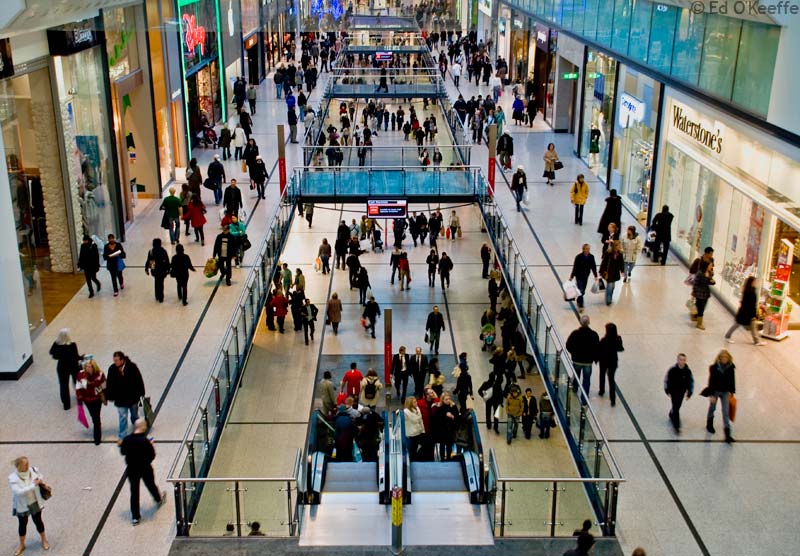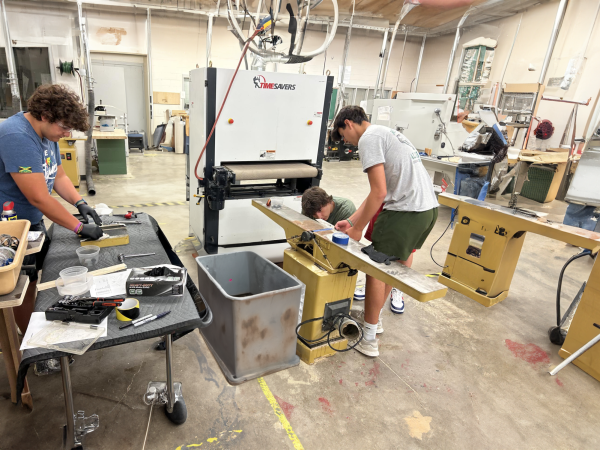The Price Behind Your $8 T-Shirt
How fast fashion is impacting society and the planet
February 12, 2019
As consumers, we are always trying to follow the newest trend and buy the latest product. Companies aim to start or keep up with the trends, which results in the production of large quantities of inexpensive clothing in a short time span; this process is known as fast fashion. With the help of enticing advertising, accessibility of e-commerce and other societal factors or pressures, people stay in the cycle of constant consumption and fuel this immense industry. Trends may come and go, but the negative environmental and human rights effects of fast fashion are here to stay.
According to Lucy Siegle from the Huffington Post, “One of the biggest culprits is fast fashion, the system of rapid production that creates low-cost clothes increasingly treated as disposable. Without reform, the fashion industry (of which fast fashion is the dominant player) could be responsible for a quarter of the Earth’s carbon budget by 2050.”
Cheap textiles like polyester are derived from fossil fuels and are prone to shed plastic fibers; these fibers can end up in the ocean after being washed and cause destruction to marine ecosystems. Toxic chemicals that are used to tan leathers are toxic to the environment when disposed of improperly, which is common in countries lacking in restriction like China. The rate at which clothing is produced causes consumers to buy more and dispose of more, creating a huge amount of textile waste.
In the United States alone, “Americans still throw away 13 million tons of textiles — about 85 percent of their clothes — each year, accounting for 9 percent of total non-recycled waste” according to the digital producer for the Public Broadcasting Station Gretchen Frazier.
Although the issue has grown significantly over the past decade, people are curbing the impact of fast fashion whether they realize it or not; thrifting, buying pre-owned articles of clothing, has become popular in the last decade. Thrift shopping extends an item’s life, which means there is more time before it ends up in a landfill and pollutes the environment.
Seniors Autumn O’Keefe and Ava Bonner are contributing to this trend by selling their used articles of clothing on social media. O’Keefe and Bonner opened their own online thrift store on instagram in the Spring of 2018, marketing towards high school girls.
“I started the account to get rid of clothing that I didn’t use or need anymore,” O’Keefe said. “I thought people around me could get a lot better use out of the clothing than I did.”
They have sold over 30 clothing pieces to people in the community for a reasonable price. These second-hand clothing accounts on social media have become extremely well received among high school students and continue to be on the rise.
Senior Kate McCoy is an avid thrift shopper because of the affordable prices and unique pieces. Although she has never bought from an online thrift store, McCoy loves the intent behind Bonner and O’Keefe’s account.
“I think these accounts are good because you can get a lot of clothes from your friends”, said McCoy. “There is going to be a lot of trash with all the clothes that people buy unless they upcycle. I have a lot of clothes in my closest that I have bought new and probably won’t wear again.”
An influx of thrift stores have opened in the Omaha area, including the Goodwill, Flying Worm and Scout. Collectively, Goodwill diverted more than 427 million pounds of computers and computer equipment from landfills according to the Goodwill Blogger Julia Marchand.
Alongside environmental effects, fast fashion can have negative impacts on workers around the globe. There is a bigger price behind an $8 T-shirt that many people may fail to realize. Workers are being subjected to unsuitable working conditions and extremely low wages to fuel mass production. This issue was evident in the Triangle Shirtwaist Factory Fire of 1911 and is still happening today.
Bangladesh produces a significant amount of the world’s textiles and has experienced the effects. In 2012, “Workers at Tazreen Fashions had staged small demonstrations in the months before the fire, demanding wages they were owed. On the night of the fire, more than 1,150 people were inside the eight-story building, working overtime shifts to fill orders for various international brands” according to the New York Times. Frightening parallels are still drawn today between the unregulated rule of the industrial age around the globe, putting factory workers in danger and exploiting their labor.
A plethora of different environmentally conscious and sustainable brands like Alternative Apparel have launched in response to the growing influence of fast fashion. These brands often use recycled or organic materials that are ethically sourced. Buying more clothing from fair trade, trade between companies in developed countries and producers in developing countries where fair wages are given, and eco-friendly companies helps decrease clothing pollution and encourage good business ethics.
Fast fashion still has a strong hold in the fashion industry with multi billion dollar brands like Forever 21 and H&M and do not appear to be going anywhere for now. Despite this harsh reality, alternative brands and methods like thrifting that could help to contain the issue.

















